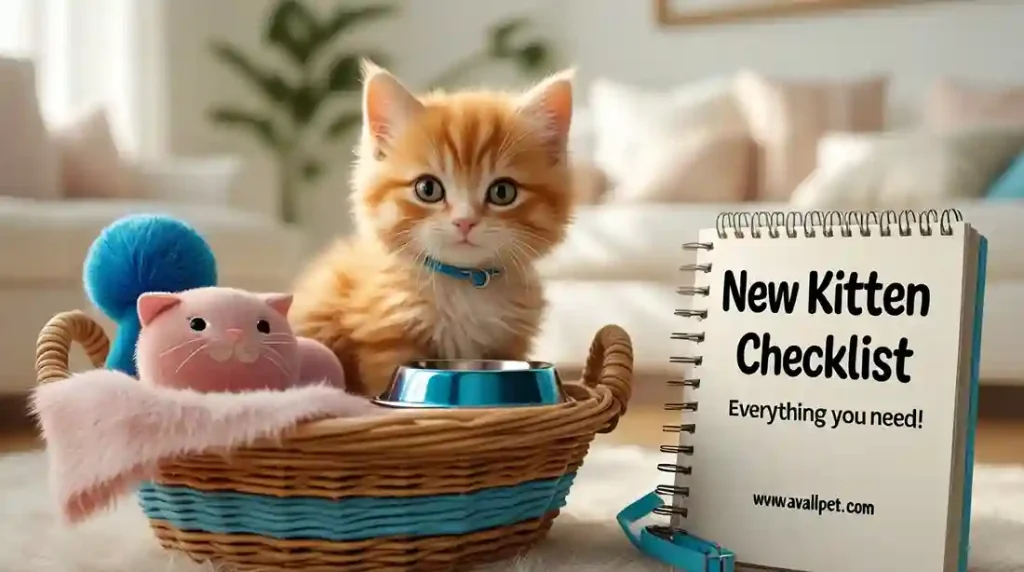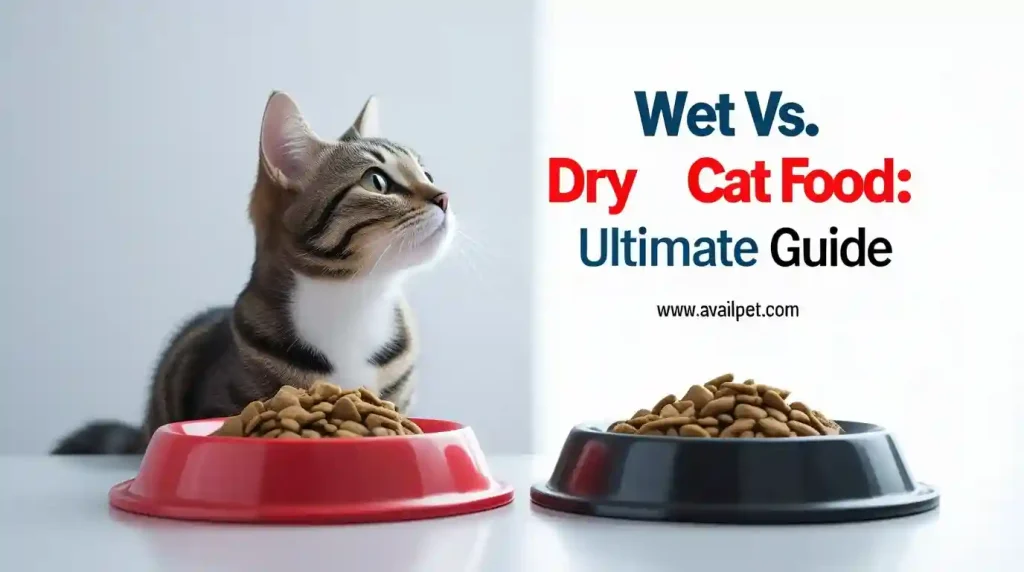🔑 Key Takeaways: Feline Panleukopenia Symptoms
- Primary Signs: Sudden lethargy, loss of appetite, and high fever.
- Severe Signs: Vomiting, bloody diarrhea, and severe dehydration.
- Contagious: Yes, highly contagious among unvaccinated cats via contact with infected feces, urine, or saliva.
- Action Required: This is a medical emergency. The survival rate drops without rapid veterinary intervention. Contact your veterinarian immediately.
Noticing your cat is suddenly listless, refusing food, or seems dangerously unwell can be a terrifying experience for any pet owner. What you might be witnessing could be the first signs of feline panleukopenia (FP), often called feline distemper—a highly contagious and often fatal viral disease.
Understanding the symptoms of panleukopenia is critical because this illness progresses with alarming speed, especially in kittens and unvaccinated cats. This guide, reviewed by our veterinary team, consolidates the latest information from authorities like the American Veterinary Medical Association (AVMA) to help you recognize the key signs, understand the urgency, and take informed, life-saving action for your pet.
What is Feline Panleukopenia (Feline Distemper)?
Before we dive into the specific symptoms, it’s crucial to understand what you’re dealing with. Feline panleukopenia is a severe, highly contagious viral disease caused by the feline parvovirus. This virus is notoriously resilient and can survive in the environment for months or even years, making it a persistent threat.
The name “panleukopenia” itself offers a clue to the damage it causes: “pan-” means all, “leuko-” refers to white blood cells, and “-penia” means a lack of. The virus primarily attacks and destroys rapidly dividing cells in the body, most notably the white blood cells in the bone marrow and the cells lining the intestines.
This leads to two catastrophic problems:
- A Crippled Immune System: With white blood cell counts plummeting, the cat is left defenseless against secondary infections.
- Severe Gastrointestinal Damage: The intestinal lining is destroyed, preventing nutrient absorption and leading to life-threatening dehydration, vomiting, and diarrhea.
Key Characteristics of the Virus:
- Incubation Period: Symptoms typically appear within 2-7 days after exposure.
- High Contagion: It spreads through all body secretions, most commonly contact with infected feces, urine, saliva, or contaminated surfaces like food bowls, bedding, and even human hands.
- At-Risk Groups: Unvaccinated kittens and cats are at the highest risk. The disease is often fatal for them, while adult cats may have a better chance with immediate, aggressive veterinary care.
The 7 Critical Feline Panleukopenia Symptoms
Feline panleukopenia attacks the body swiftly. The symptoms often appear suddenly and can escalate from concerning to life-threatening in a matter of hours. Recognizing this progression is key to getting timely help. Here are the 7 critical signs you must know, categorized by their severity.
🚨 Stage 1: Early Warning Signs
These are the initial feline panleukopenia symptoms that should trigger immediate concern and close monitoring.
- Profound Lethargy & Depression: This isn’t just a cat being tired. Your cat may become completely listless, unresponsive, and show no interest in its surroundings, often hiding or refusing to move.
- Complete Loss of Appetite (Anorexia): A cat that suddenly turns down its favorite food or treats is a major red flag. This refusal to eat or drink quickly leads to weakness and dehydration.
- High Fever: A high fever is one of the body’s first responses to the virus. You may notice your cat feels hot to the touch, is shivering, or seeking out cool surfaces.
⚠️ Stage 2: Progressive & Severe Symptoms
As the virus destroys the intestinal lining, more severe, visible feline panleukopenia symptoms emerge. This is a clear sign the situation is critical.
- Vomiting: Affected cats often vomit repeatedly. The vomit may start as clear fluid or bile and can progress to contain blood or foam.
- Severe, Often Bloody Diarrhea (Hemorrhagic Enteritis): This is a hallmark sign. The diarrhea is typically liquid, foul-smelling, and may contain fresh blood or mucus due to the severe intestinal damage.
- Severe Dehydration: The combination of relentless vomiting and diarrhea causes rapid, severe dehydration. Signs include sunken eyes, dry and sticky gums, and loss of skin elasticity (when you gently pinch the skin on the neck, it doesn’t snap back quickly).
🔬 Stage 3: The Hidden Symptom
This symptom is not visible to the naked eye but is central to the disease’s name and is diagnosed by a veterinarian.
- Drastically Low White Blood Cell Count (Panleukopenia): The virus decimates the bone marrow’s ability to produce white blood cells, which are essential for fighting infection. This leaves the cat utterly defenseless against the virus itself and any secondary bacterial infections, turning a serious condition into a fatal one.
What to Do If You Suspect Panleukopenia
Time is the most critical factor when dealing with feline panleukopenia. If your cat is showing any combination of the symptoms listed above, especially vomiting and lethargy, immediate action is not just recommended—it is essential for survival.
🚑 Immediate Action is Critical
Contact your veterinarian or an emergency animal clinic immediately. This is a true medical emergency.
- Do Not Wait: The disease can overwhelm a cat, especially a kitten, in less than 24 hours. The survival rate plummets without rapid, aggressive medical intervention.
- Call Ahead: When you call, inform them that you suspect panleukopenia. This allows the clinic to prepare for your arrival and take necessary isolation precautions to protect other patients. While on the phone with your vet, you can prepare for your visit. Having a digital pet thermometer can help you accurately report your cat’s temperature. For the journey, a secure and comfortable pet carrier is essential to reduce stress for your sick cat.
- Isolate Your Cat: If you have other cats, immediately isolate the sick cat in a separate room with its own litter box, food, and water bowls to prevent the virus from spreading.
🔬 How Vets Diagnose Panleukopenia
Your veterinarian will make a diagnosis based on a combination of factors to confirm their suspicions:
- Clinical History & Symptoms: They will ask about your cat’s vaccination status, recent exposure to other cats, and the specific symptoms you’ve observed.
- Physical Examination: The vet will check for signs of dehydration, abdominal pain, and fever.
- Diagnostic Tests:
- Blood Test (CBC): This is often the most telling sign. A complete blood count will reveal a severely low white blood cell count (panleukopenia), which is characteristic of the disease.
- Fecal Test (SNAP FPV Test): Many clinics have in-house tests that can detect the parvovirus antigen in a cat’s feces, providing a rapid result.
A confirmed diagnosis allows the veterinary team to begin targeted, supportive care without delay.
Treatment and Prevention: The Path to Recovery
Once a diagnosis of feline panleukopenia is confirmed, the focus shifts entirely to supportive care. There is no specific antiviral drug that kills the feline parvovirus. Instead, the goal of treatment is to support the cat’s own body and immune system as it fights off the infection.
💊 Overview of Treatment Options
Treatment is intensive and often requires 24-hour hospitalization. The core components include:
- Aggressive Fluid Therapy: This is the cornerstone of treatment. IV fluids are essential to combat severe dehydration from vomiting and diarrhea, correct electrolyte imbalances, and support blood pressure.
- Anti-Nausea Medication (Antiemetics): These drugs are administered to control vomiting, which is critical for allowing the cat to keep food and water down.
- Broad-Spectrum Antibiotics: Because the virus wipes out the white blood cells, the cat is left vulnerable to secondary bacterial infections. Antibiotics are used preventatively to fight these off.
- Nutritional Support: If a cat cannot eat on its own, a veterinarian may place a feeding tube to provide essential nutrients directly into the stomach, giving the body the energy it needs to fight the virus.
- Blood or Plasma Transfusions: In severe cases, a transfusion may be necessary to provide antibodies, proteins, and clotting factors to help the cat survive.
The prognosis depends heavily on the cat’s age, immune status, and how quickly aggressive treatment is started.
🛡️ The Best Defense: Vaccination
The single most effective way to protect your cat from this deadly disease is through vaccination. The FVRCP vaccine—which stands for Feline Viral Rhinotracheitis, Calicivirus, and Panleukopenia—is a core vaccine recommended for all cats, both indoor and outdoor.
- Kitten Series: Kittens receive a series of shots starting at around 6-8 weeks of age, with boosters every 3-4 weeks until they are 16-20 weeks old. This series is critical for building their initial immunity.
- Adult Boosters: Adult cats require regular booster shots as recommended by your veterinarian (typically every 1-3 years) to maintain protection.
Ensuring your kitten receives this vaccine on time is non-negotiable. For a detailed timeline, see our complete guide: Kitten Vaccination Schedule: A Complete Vet-Reviewed Timeline & Guide.
FAQs About Feline Panleukopenia Symptoms
What are the first signs of panleukopenia in a cat?
The very first signs are often profound lethargy (extreme weakness and listlessness), a complete loss of appetite, and a high fever. A cat that is usually active becoming suddenly unresponsive and refusing food is a major red flag that warrants an immediate call to your veterinarian.
Can an indoor cat get panleukopenia?
Yes, it is possible, though the risk is significantly lower than for outdoor cats. The feline panleukopenia virus is incredibly resilient and can be brought inside on shoes, clothing, or other contaminated objects. An unvaccinated indoor cat is still susceptible if the virus is accidentally introduced into their environment.
What is the survival rate for feline panleukopenia?
The survival rate is highly variable and depends on the cat’s age, overall health, and—most critically—how quickly aggressive treatment is started. With prompt and intensive veterinary care, survival rates can be as high as 80-90%. However, for very young kittens or cats who do not receive immediate treatment, the disease is often fatal. This underscores why urgent veterinary care is non-negotiable.
Is feline panleukopenia the same as feline distemper?
Yes, they are the same disease. “Feline distemper” is a common layman’s term for feline panleukopenia. It is important not to confuse it with canine distemper, which is a completely different virus that affects dogs and cannot be transmitted to cats.
Conclusion: Vigilance Saves Lives
Feline panleukopenia is a swift and severe disease, but being able to recognize its symptoms—especially the early signs of lethargy, loss of appetite, and fever, escalating to vomiting and diarrhea—can make the difference between life and death for your cat.
Remember these key points:
- Speed is Critical: This is not a “wait-and-see” illness. If you observe these signs, contact your veterinarian or an emergency clinic immediately.
- There is No Cure, Only Care: Survival depends on aggressive, supportive veterinary treatment to help your cat’s body fight the virus.
- Prevention is Paramount: The FVRCP vaccine is highly effective and is the single best way to protect your cat. Ensuring your kitten completes its vaccination series and that your adult cat receives regular boosters is a fundamental responsibility of pet ownership.
Whether you are researching potential health risks for a new family pet or caring for a beloved companion, understanding threats like panleukopenia is key to ensuring a long, healthy, and happy life together. Stay vigilant, prioritize prevention, and always act quickly in the face of potential illness.
This article has been reviewed for accuracy by Allona Jackson, DVM to ensure it aligns with the latest veterinary standards and best practices. The information provided is for educational purposes and is not a substitute for professional veterinary advice, diagnosis, or treatment. Always consult with your veterinarian with any questions you may have regarding your pet’s health.
Sources






